The War of the Sixth Coalition (1812–1814)
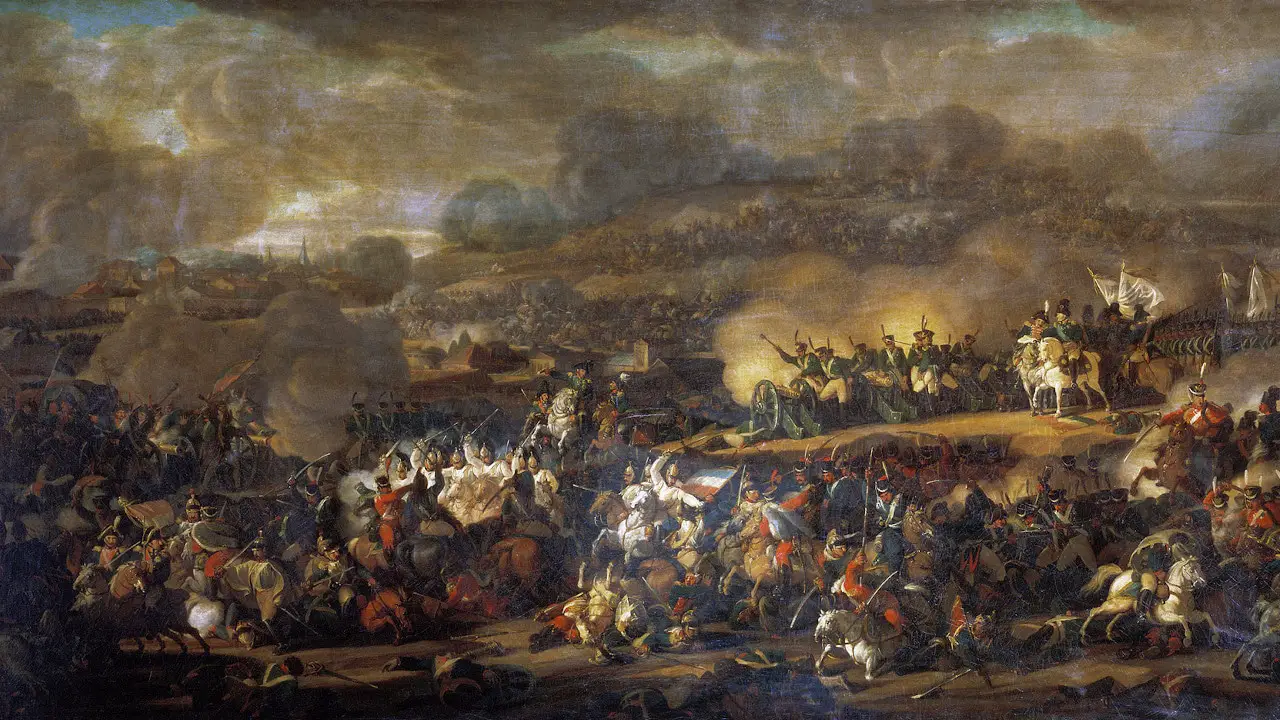
In the War of the Sixth Coalition (March 1813 – May 1814), a coalition of Austria, Prussia, Russia, the United Kingdom, Portugal, Sweden, Spain and a number of German States defeated France and drove Napoleon into exile on Elba. After the disastrous French invasion of Russia of 1812 in which they had been forced to support France, Prussia and Austria joined Russia, the United Kingdom, Sweden, Portugal and the rebels in Spain who were already at war with France.
The War of the Sixth Coalition saw major battles at Lützen, Bautzen, Dresden, and Leipzig. Ultimately, Napoleon's earlier setbacks in Russia and Germany proved to be the seeds of his undoing. With their armies reorganized, the allies drove Napoleon out of Germany in 1813 and invaded France in 1814. The Allies defeated the remaining French armies, occupied Paris, and forced Napoleon to abdicate and go into exile. The French monarchy was revived by the allies, who handed rule to the heir of the House of Bourbon in the Bourbon Restoration.
IN SHORT: Napoleon’s Mexican standoff with the rest of the planet following his epic pwnage by the Russian Empire.
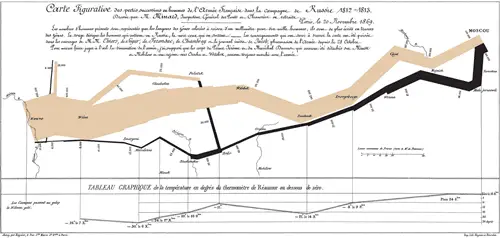
WHY IT WAS A BIG DEAL: Because the War of the Sixth Coalition was the Battle of Yavin of the Napoleonic campaigns: it shows that the bugger could be defeated if you threw enough of the world’s most powerful countries at it and added a little bit of the Force.
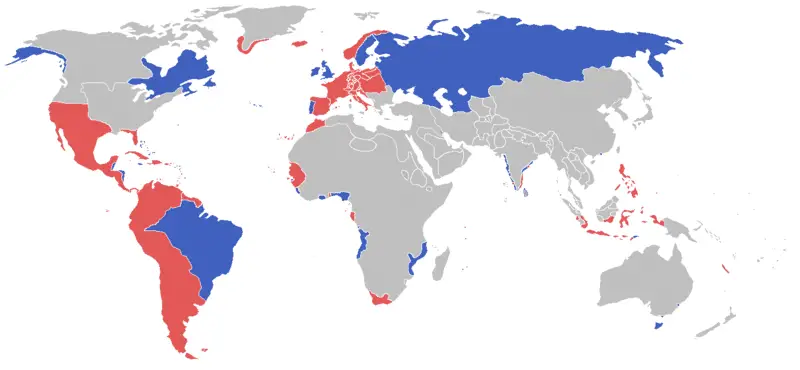
WHY NOBODY CARES: Because of freaking Napoleon. The bastard was given his own private Italian island if he promised to stop playing war with Europe, but apparently living like George Clooney is not good enough for some egos.
The ingrate eventually sneaked out of Elba and relaunched his campaigns against Europe, thus making all the victories of the War of the Sixth Coalition moot. This resulted in the Hundred Days campaign, Napoleon’s much more famous defeat at Waterloo, and Napoleon’s eventual exile on Saint Helena, a sad rock 2,000 kilometers from the nearest landmass.
The Thirty Years’ War (1618–1648)
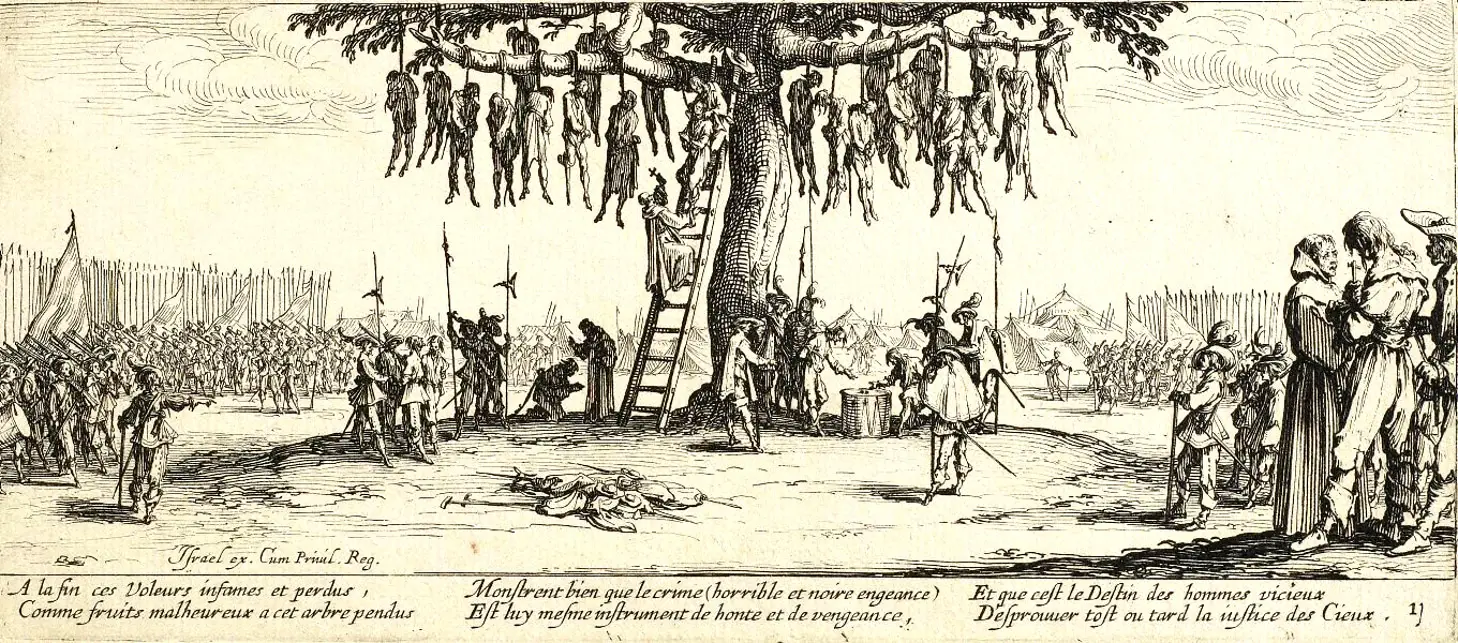
The Thirty Years' War was a war fought primarily in Central Europe between 1618 and 1648. One of the most destructive conflicts in human history, it resulted in eight million fatalities not only from military engagements but also from violence, famine, and plague. Casualties were overwhelmingly and disproportionately inhabitants of the Holy Roman Empire, most of the rest being battle deaths from various foreign armies. The deadly clashes ravaged Europe; 20 percent of the total population of Germany died during the conflict and there were losses up to 50 percent in a corridor between Pomerania and the Black Forest. In terms of proportional German casualties and destruction, it was surpassed only by the period of January to May 1945 during World War II. One of its enduring results was 19th-century Pan-Germanism, when it served as an example of the dangers of a divided Germany and became a key justification for the 1871 creation of the German Empire.
Initially a war between various Protestant and Catholic states in the fragmented Holy Roman Empire, it gradually developed into a more general conflict involving most of the European great powers. These states employed relatively large mercenary armies, and the war became less about religion and more of a continuation of the France–Habsburg rivalry for European political pre-eminence and a Habsburg attempt to rebuild the imperial authority in Germany.
The war was preceded by the election of the new Habsburg Holy Roman Emperor, Ferdinand II, who tried to impose religious uniformity on his domains, forcing Catholicism on its peoples. The northern Protestant states, angered by the violation of their rights to religious liberty, which had been granted in 1555 in the Peace of Augsburg, banded together to form the Protestant Union. Ferdinand II was a devout Catholic and much less tolerant than his predecessor, Rudolf II, who ruled from the largely Protestant city of Prague. Ferdinand's policies were considered strongly pro-Catholic and anti-Protestant.
These events caused widespread fears throughout northern and central Europe, and triggered the Protestant Bohemians living in the then relatively loose dominion of Habsburg Austria (and also within the Holy Roman Empire) to revolt against their nominal ruler, Ferdinand II. After the so-called Defenestration of Prague deposed the Emperor's representatives in Prague, the Protestant estates and Catholic Habsburgs started gathering allies for war. The Protestant Bohemians ousted the Habsburgs and elected the Calvinist Frederick V, Elector of the Rhenish Palatinate as the new king of the Kingdom of Bohemia. Frederick took the offer without the support of the Protestant Union. The southern states, mainly Catholic, were angered by this. Led by Bavaria, these states formed the Catholic League to expel Frederick in support of the Emperor. The Empire soon crushed the perceived Protestant rebellion in the Battle of White Mountain, executing leading Bohemian aristocrats shortly after. Protestant rulers across Europe unanimously condemned the Emperor's action.
After the atrocities committed in Bohemia, Saxony finally gave its support to the Protestant Union and decided to fight back. Sweden, at the time a rising military power, soon intervened in 1630 under its king Gustavus Adolphus, transforming what had been simply the Emperor's attempt to curb the Protestant states into a full-scale war in Europe. Habsburg Spain, wishing to finally crush the Dutch rebels in the Netherlands and the Dutch Republic (which was de facto independent since 1581 but de jure still a part of the Holy Roman Empire), intervened under the pretext of helping its dynastic Habsburg ally, Austria. No longer able to tolerate the encirclement of two major Habsburg powers on its borders, Catholic France entered the coalition on the side of the Protestants in order to counter the Habsburgs.
The Thirty Years' War devastated entire regions, resulting in high mortality, especially among the populations of the German and Italian states, the Crown of Bohemia, and the Southern Netherlands. Both mercenaries and soldiers in fighting armies traditionally looted or extorted tribute to get operating funds, which imposed severe hardships on the inhabitants of occupied territories. The war also bankrupted most of the combatant powers.
The Dutch Republic ultimately benefited; it obtained independence from the Holy Roman Empire and also from Spain (which had directly controlled the Dutch lands despite it not being part of the Holy Roman Empire) thus concluding its 80-year revolt against Spain. It subsequently enjoyed a time of great prosperity and development, known as the Dutch Golden Age, during which it became one of the world's foremost economic, colonial, and naval powers.
The Thirty Years' War ended with the Treaty of Osnabrück and the Treaties of Münster, part of the wider Peace of Westphalia. The war altered the political order of European powers. The rise of Bourbon France, the curtailing of Habsburg ambition, and the ascendancy of Sweden as a great power created a new balance of power on the continent, with France emerging from the war strengthened and increasingly dominant in the latter part of the 17th century.
IN SHORT: One of the most brutal wars in human history fought between the largest powers in Europe for control of the ocean. In a nutshell, it was Spain vs. everyone else.
WHY IT WAS A BIG DEAL: While most of the fighting was done on mainland Europe, its naval engagements spanned around the globe. The Thirty Years’ War prevented Spain from becoming the naval superpower of the planet, and also laid the foundation for the colonial system that most of the modern world, including the United States, exists because of.
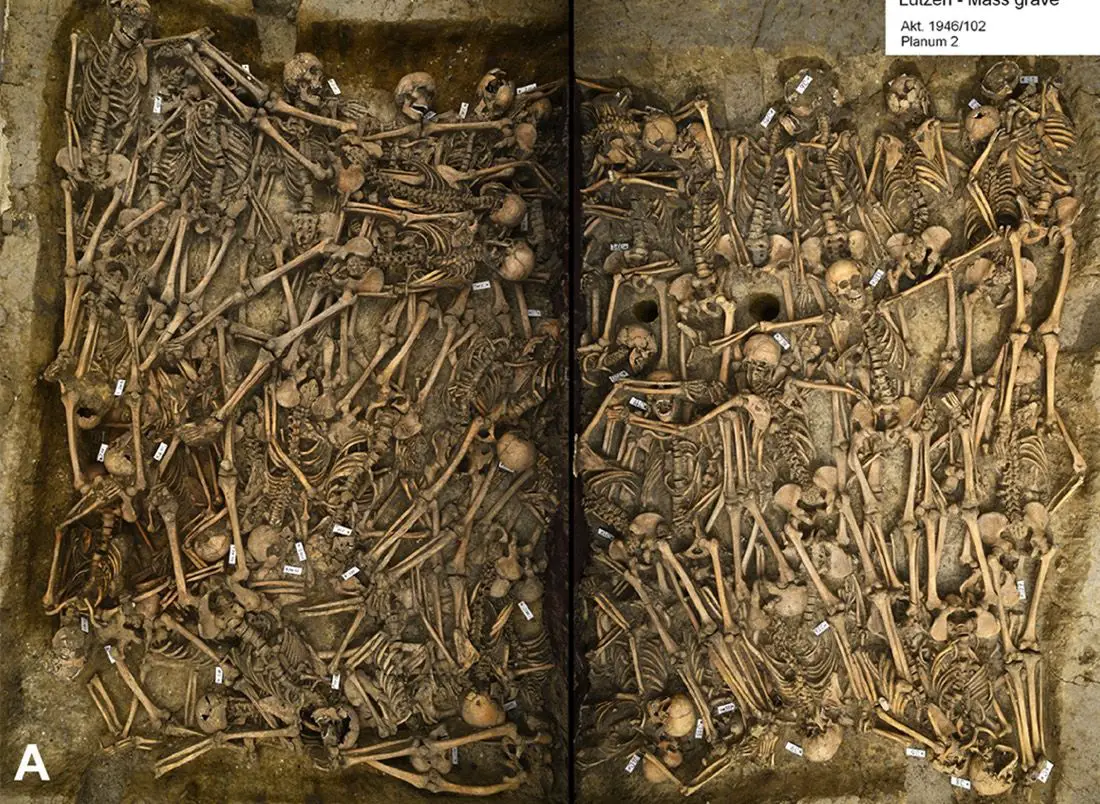
WHY NOBODY CARES: Because the winners were Bourbons, the Swedes, and the Dutch, and they never remained powerful long enough for their victory to matter.
The War of the Spanish Succession (1701-1714)
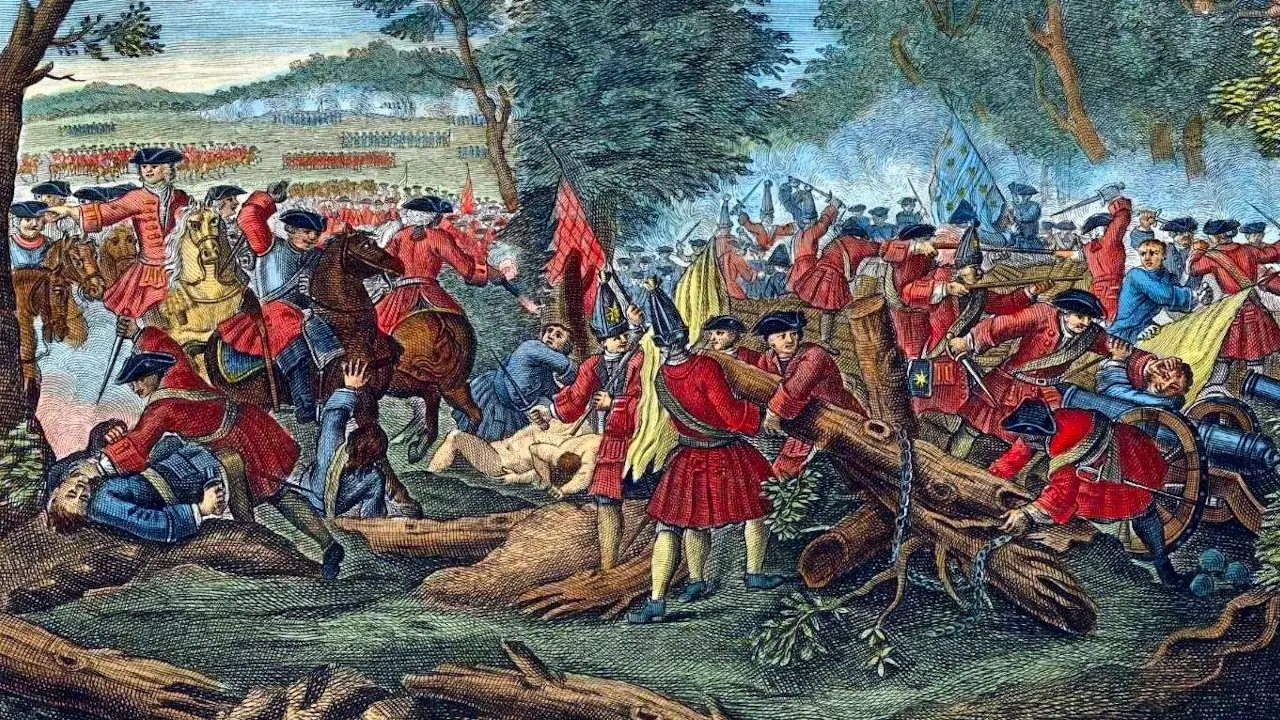
The War of the Spanish Succession (1701–1714) was a European conflict of the early 18th century, triggered by the death of the childless Charles II of Spain in November 1700, the last Habsburg monarch of Spain. His closest heirs were members of the Austrian Habsburg and French Bourbon families; acquisition of an undivided Spanish Empire by either threatened the European balance of power and thus involved the other leading powers.
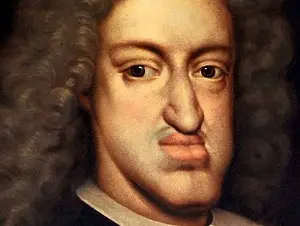
Charles bequeathed an undivided monarchy of Spain to his grandnephew Philip, who was also grandson of Louis XIV of France. Philip was proclaimed King of Spain on 16 November 1700. Disputes over territorial and commercial rights led to war in 1701 between the Bourbons of France and Spain and the Grand Alliance, whose candidate was Charles, younger son of Leopold I, Holy Roman Emperor.
By the end of 1706, the French had been forced back to their borders but the Allies could not break their lines, while lack of popular support in Spain meant they could not hold territory outside Catalonia. When his brother Emperor Joseph I died in 1711, Charles succeeded to the Austrian territories and became emperor. Since the war was fought to prevent union of Spain with either Austria or France, the new British government sought to end the conflict. The Allies and France agreed to the 1713 Treaty of Utrecht, then the 1714 treaties of Rastatt and Baden.
Philip was recognized as the king of Spain, while renouncing his right to the French throne for himself and his descendants. This marked the birth of the Spanish Bourbon dynasty, which still is the reigning royal house of the Kingdom of Spain, as well as the end of the two century-long Habsburg encirclement of France. Philip was awarded the bulk of the Spanish possessions outside Europe, but lost territories in Italy and the Netherlands to Charles and the House of Savoy. The Dutch regained their Barrier and France acknowledged the Protestant succession in Britain and ended support for the Jacobites. Longer-term, the war marked Britain's rise as the leading European maritime and commercial power, and the decline of the Dutch Republic as a first-rank power. It also led to the creation of a centralized Spanish state, the weakening of Habsburg control over the Holy Roman Empire, and the rise of Prussia, Bavaria and Saxony.
IN SHORT: The epic war for the throne of a king so fantastically inbred that he couldn’t chew his own food, let alone put his own hardware to work producing heirs.
WHY IT WAS A BIG DEAL: It’s the reason why the world doesn’t belong to a bunch of inbred kings today.
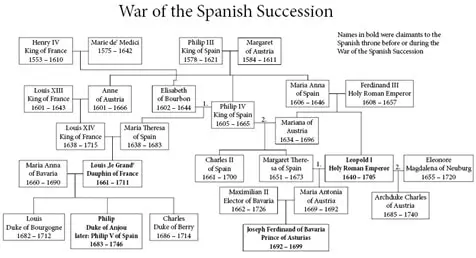
WHY NOBODY CARES: Let’s put it this way: The less we have to hear about the Habsburgs, the better it is for all of us.
The Seven Years’ War (1756–1763)
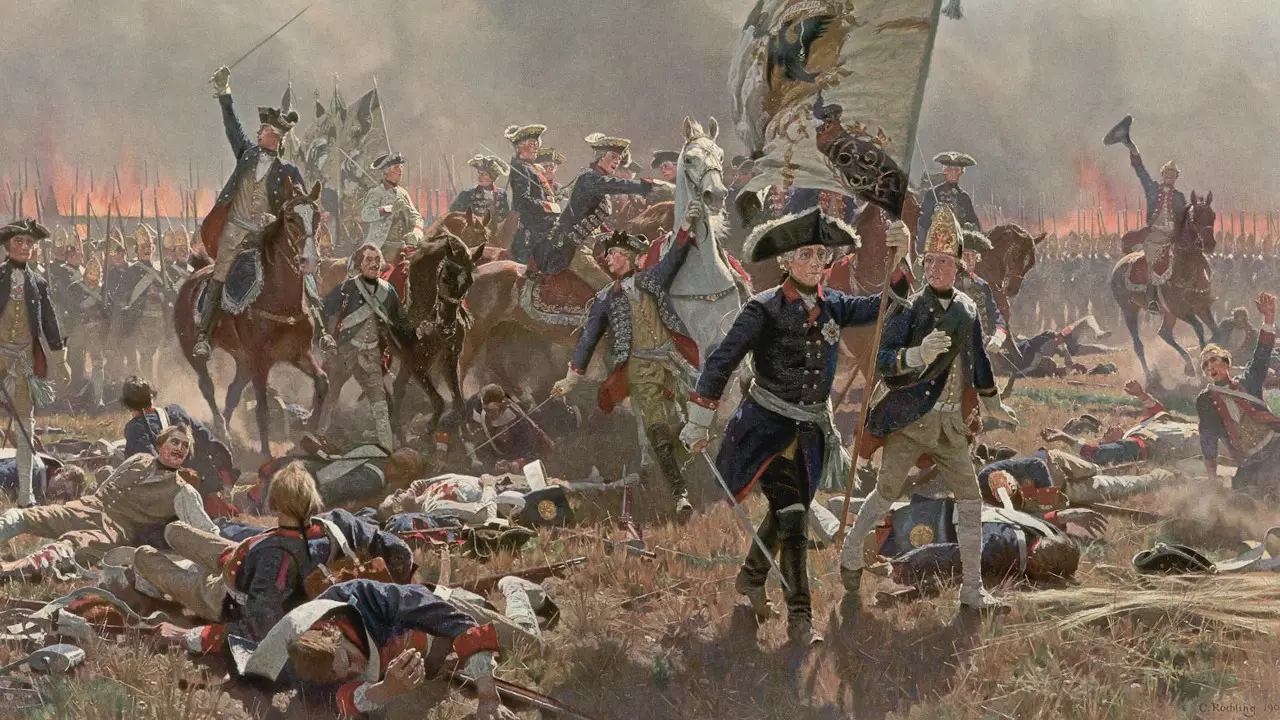
The Seven Years' War was a global war fought between 1756 and 1763. It involved all five European great powers of the time -- the Kingdoms of Great Britain, Prussia and France, the Habsburg Monarchy of Austria and the Russian Empire -- plus many of Europe's middle powers.
The conflict split Europe into two coalitions: one was led by Great Britain and included Prussia, the Electorate of Brunswick-Lüneburg (also named Hanover), the Kingdom of Portugal and a few other small German states; while the other was led by the France and included the Austrian-led Holy Roman Empire, including the Electorate of Saxony and most of the smaller German states, Russia (until 1762), the Kingdom of Spain, and Sweden.
Although Anglo-French skirmishes over their American colonies had begun in 1754, with what became known in the United States as the French and Indian War, the large-scale conflict that drew in most of the European powers was centered on Austria's desire to recover Silesia from Prussia. Seeing the opportunity to curtail Britain's and Prussia's ever-growing might, France and Austria put aside their ancient rivalry to form a grand coalition of their own, bringing most of the other European powers to their side. Faced with this sudden turn of events, Britain aligned itself with Prussia, in a series of political maneuvers known as the Diplomatic Revolution. French efforts ended in failure when the Anglo-Prussian coalition prevailed, and Britain's rise among the world's predominant powers destroyed France's supremacy in Europe, and Prussia confirmed its status as a great power challenging Austria for dominance within Germany, thus altering the European balance of power.
IN SHORT: The war for control of the American continent which Winston Churchill described as “the first world war” in A History of the English-Speaking Peoples.
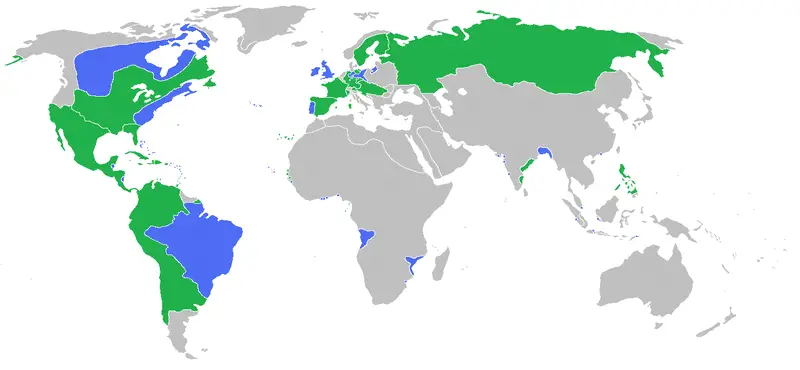
Green: France, Spain, Austria, Russia, Sweden with allies
WHY IT WAS A BIG DEAL: The war served as the catalyst for the American Revolution and more than one bad movie on the subject—not counting The Last of the Mohicans, which was awesome.
WHY NOBODY CARES: Because nobody wants to remember it. The war was such an embarrassment for the French and (in the long run) the English that both sides would probably be content if the most we ever learn about it is whatever Ubisoft dreams up for the Assassin’s Creed video game franchise.
The Ottoman–Habsburg Wars (1526-1791)

The Ottoman–Habsburg wars were fought from the 16th through the 18th centuries between the Ottoman Empire and the Habsburg Monarchy, which was at times supported by the Holy Roman Empire, Kingdom of Hungary, Polish–Lithuanian Commonwealth, and Habsburg Spain. The wars were dominated by land campaigns in Hungary, including Transylvania (today in Romania) and Vojvodina (today in Serbia), Croatia and central Serbia.
By the 16th century, the Ottomans had become a serious threat to the European powers, with Ottoman ships sweeping away Venetian possessions in the Aegean and Ionian seas and Ottoman-supported Barbary pirates seizing Spanish possessions in the Maghreb. The Protestant Reformation, the French–Habsburg rivalry and the numerous civil conflicts of the Holy Roman Empire distracted the Christians from their conflict with the Ottomans. Meanwhile, the Ottomans had to contend with the Persian Safavid Empire and to a lesser extent the Mamluk Sultanate, which was defeated and fully incorporated into the empire.
Initially, Ottoman conquests in Europe made significant gains with a decisive victory at Mohács reducing around one third (central) part of Kingdom of Hungary to the status of an Ottoman tributary. Later, the Peace of Westphalia and the Spanish War of Succession in the 17th and 18th centuries respectively left the Austrian Empire as the sole firm possession of the House of Habsburg. After the Siege of Vienna in 1683, the Habsburgs assembled a large coalition of European powers known as the Holy League, allowing them to fight the Ottomans and to regain control over Hungary. The Great Turkish War ended with the decisive Holy League victory at Zenta. The wars ended after Austria's participation in the war of 1787-1791, which Austria fought allied with Russia. Intermittent tension between Austria and the Ottoman Empire continued throughout the nineteenth century, but they never fought each other in a war and ultimately found themselves allied in World War I, in the aftermath of which both empires were dissolved.
IN SHORT: The final showdown between the Ottoman Turks, the Habsburg Dynasty and its allies for control of the European continent—and by association, the planet attached to it.
WHY IT WAS A BIG DEAL: Had the Ottomans won, the world would be Muslim.
WHY NOBODY CARES: Neither side really won. Although the Holy League was able to check Ottoman expansion into the Mediterranean, both the Habsburg and Ottoman dynasties declined as a result of the war.
The Crimean War (1853–1856)
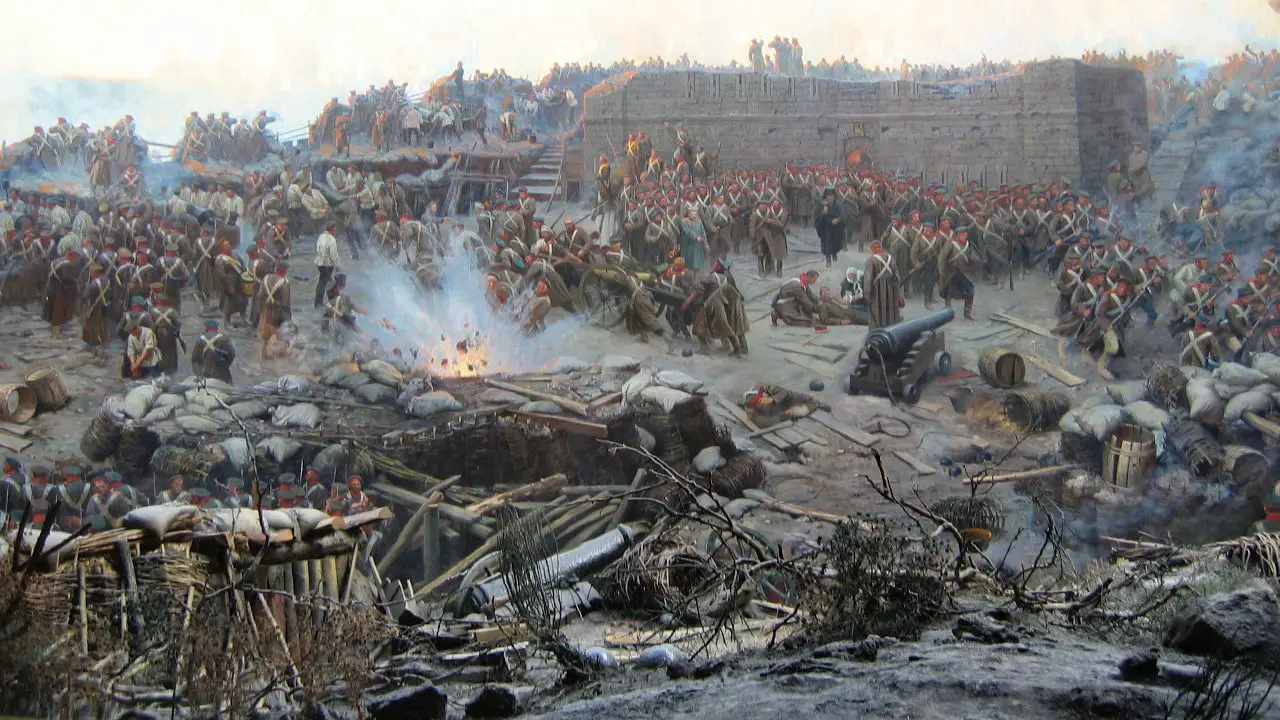
The Crimean War was a military conflict fought from October 1853 to February 1856[9] in which Russia lost to an alliance made up of the Ottoman Empire, France, United Kingdom and Sardinia. The immediate cause of the war involved the rights of Christian minorities in the Holy Land, which was a part of the Ottoman Empire. The French promoted the rights of Roman Catholics, while Russia promoted those of the Eastern Orthodox Church. The longer-term causes involved the decline of the Ottoman Empire and the unwillingness of Britain and France to allow Russia to gain territory and power at the Ottoman Empire's expense. It has widely been noted that the causes, in one case involving an argument over a key to the main door of the Church of the Nativity in Bethlehem, have never revealed a "greater confusion of purpose," yet they led to a war noted for its "notoriously incompetent international butchery".
While the churches worked out their differences and came to an agreement, Nicholas I of Russia and the French Emperor Napoleon III refused to back down. Nicholas issued an ultimatum that the Orthodox subjects of the Ottoman Empire be placed under his protection. Britain attempted to mediate and arranged a compromise that Nicholas agreed to. When the Ottomans demanded changes to the agreement, Nicholas recanted and prepared for war. Having obtained promises of support from France and Britain, the Ottomans declared war on Russia in October 1853.
The war started in the Balkans in July 1853, when Russian troops occupied the Danubian Principalities (now part of Romania), which were under Ottoman suzerainty, then began to cross the Danube. Led by Omar Pasha, the Ottomans fought a strong defensive campaign and stopped the advance at Silistra. A separate action on the fort town of Kars in eastern Anatolia led to a siege, and a Turkish attempt to reinforce the garrison was destroyed by a Russian fleet at Sinop. Fearing an Ottoman collapse, France and Britain rushed forces to Gallipoli. They then moved north to Varna in June 1854, arriving just in time for the Russians to abandon Silistra. Aside from a minor skirmish at Köstence (today Constanța), there was little for the allies to do. Karl Marx quipped, "there they are, the French doing nothing and the British helping them as fast as possible".
Frustrated by the wasted effort, and with demands for action from their citizens, the allied force decided to attack Russia's main naval base in the Black Sea at Sevastopol on the Crimean peninsula. After extended preparations, the forces landed on the peninsula in September 1854 and marched their way to a point south of Sevastopol after the successful Battle of the Alma. The Russians counterattacked on 25 October in what became the Battle of Balaclava and were repulsed, but at the cost of seriously depleting the British Army forces. A second counterattack, at Inkerman, ended in stalemate. The front settled into a siege and led to brutal conditions for troops on both sides. Smaller military actions took place in the Baltic, the Caucasus, the White Sea, and the North Pacific.
Sevastopol fell after eleven months, and neutral countries began to join the Allied cause. Isolated and facing a bleak prospect of invasion from the west if the war continued, Russia sued for peace in March 1856. France and Britain welcomed this development, as the conflict was growing unpopular at home. The Treaty of Paris, signed on 30 March 1856, ended the war. It forbade Russia from basing warships in the Black Sea. The Ottoman vassal states of Wallachia and Moldavia became largely independent. Christians there were granted a degree of official equality, and the Orthodox Church regained control of the Christian churches in dispute.
The Crimean War was one of the first conflicts in which the military used modern technologies such as explosive naval shells, railways, and telegraphs. The war was one of the first to be documented extensively in written reports and photographs. As the legend of the "Charge of the Light Brigade" demonstrates, the war quickly became an iconic symbol of logistical, medical and tactical failures and mismanagement.
The Crimean War proved to be the moment of truth for Russia. The war weakened the army, drained the treasury and undermined Russia's influence in Europe. It would take decades to recover. The humiliation forced Russia's educated elites to identify the Empire's problems and to recognize the need for fundamental reforms. They saw rapid modernization of the country as the sole way of it recovering the status of a European power. The war thus was a catalyst for the reforms of Russia's social institutions, including serfdom, justice, local self-government, education, and military service. More recently, scholars have also turned their attention to the impact of the Crimean War on the development of Russian nationalistic discourse.
IN SHORT: The first “modern war” in terms of modern warfare. With the Ottoman Empire more yesterday than an army of boy band game shows, Russia was in a prime position to conquer all their holdings the Balkans to the Bosphorus to Iraq. Since this would have established Russia as the dominate superpower of the planet, a devious coalition of English, French and Sardinians came to the muslim empire's aid just to keep Russia from leveling up.
WHY IT WAS A BIG DEAL: Because it was a grizzly sign of what wars would be like for the next century. It marked the end of Napoleonic warfare in Europe in the advent of newer—and deadlier—technologies, and provided a frightening omen of what the American civil war would look like. The war ranged from the Crimean peninsula to the Pacific Ocean, and saw the rise of railroads, telegraphs, nurses, and even photographers on the battlefield.
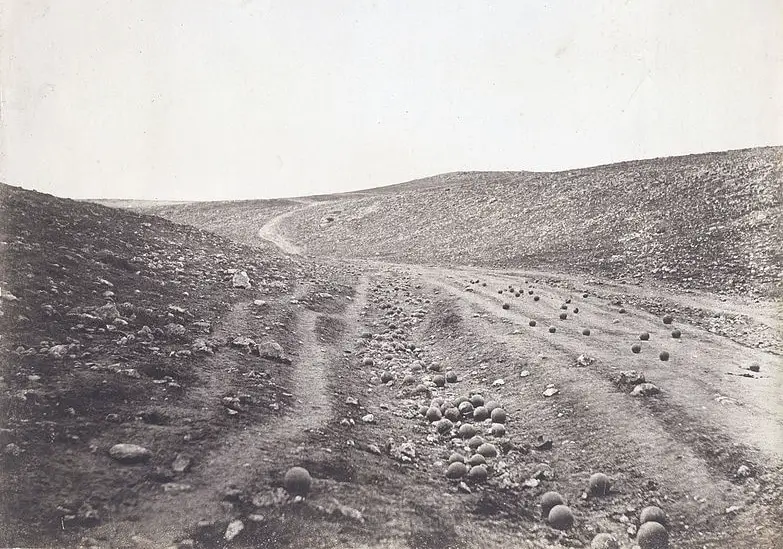
WHY NOBODY CARES: The purpose of the war was to keep things in Europe exactly as they were. As a result, with the Russian Empire defeated, things went back to being… well, pretty ordinary. Plus there was that whole American Civil War thing right after it.
 |
 DMT Has Friends For Me Shirt $21.68 |
 |
